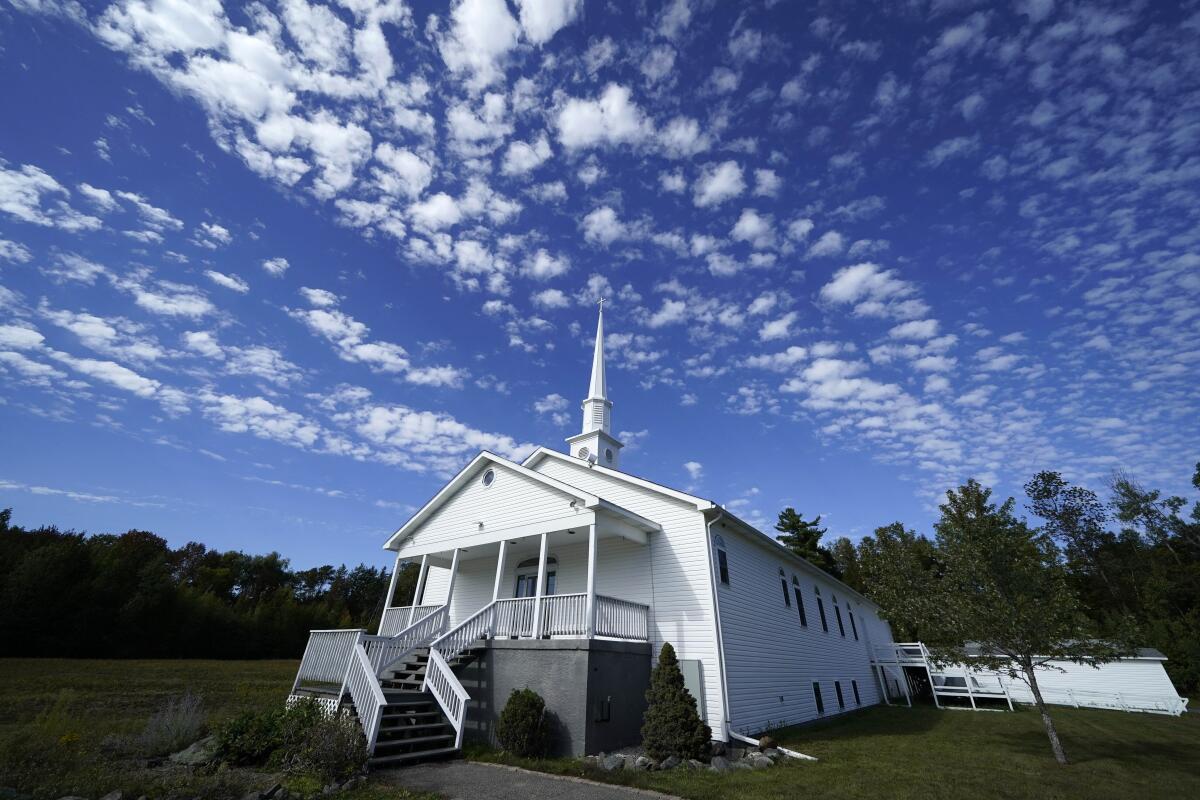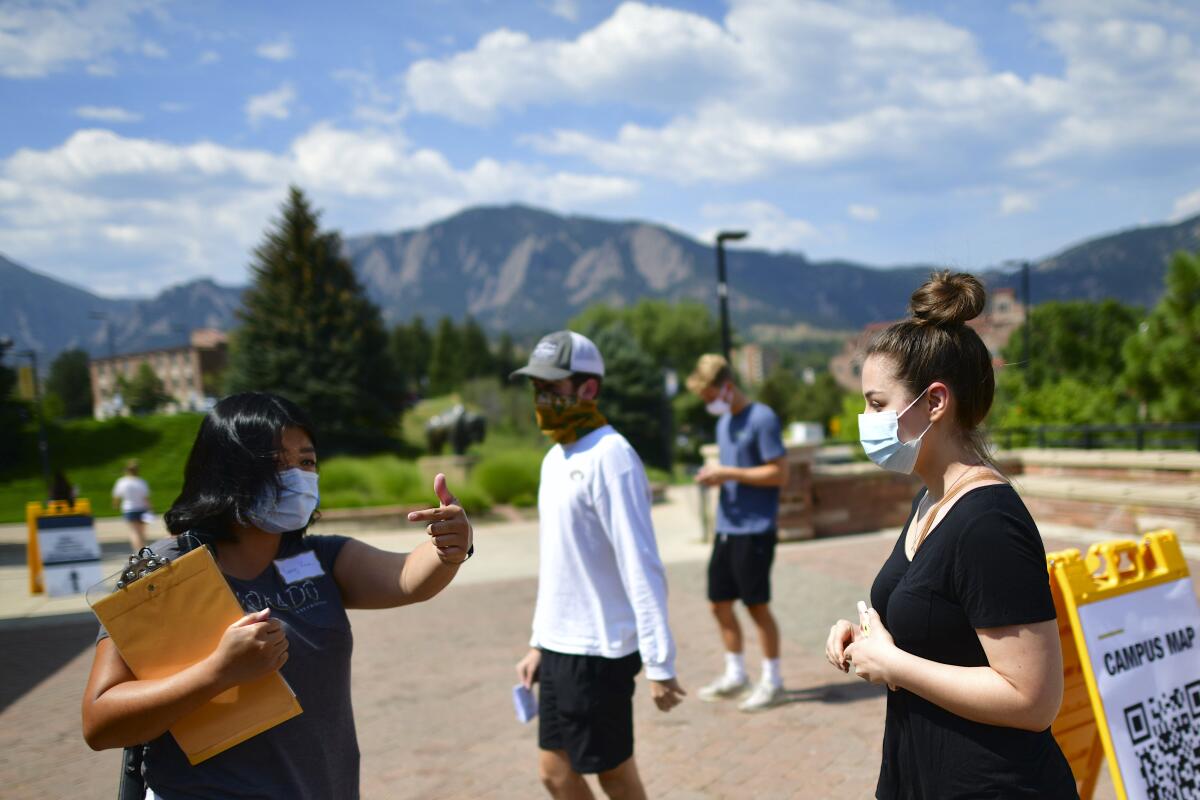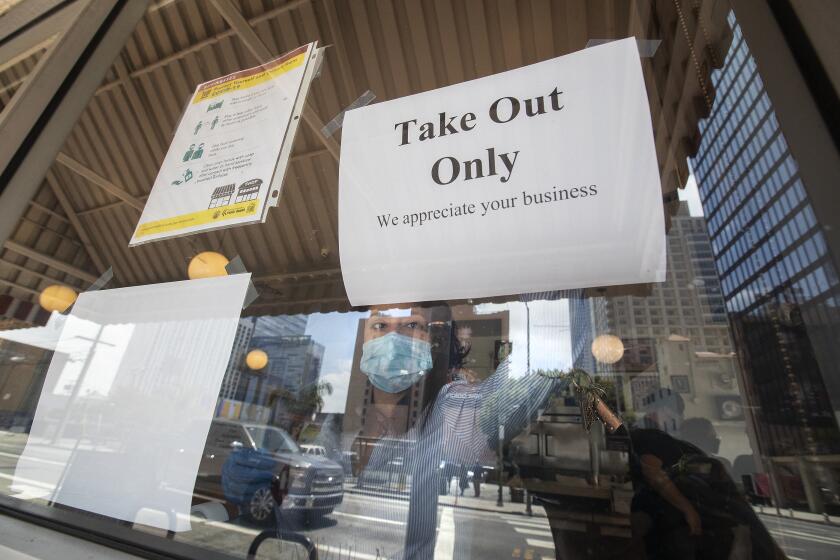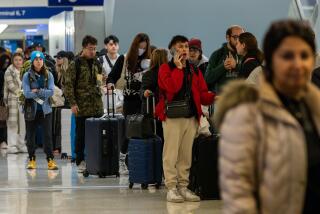From weddings to dinner out, how wholesome gatherings could bring next COVID-19 wave

- Share via
There are growing concerns that the coronavirus might be spiking again in Los Angeles County.
Officials have been desperately trying to keep infection rates down as the fall and winter holiday season approaches. On Thursday, the county announced its highest one-day increase in cases not connected to a reporting backlog since August.
There has been much focus on the role of social gatherings tied to the Lakers’ and Dodgers’ recent championship runs as possible causes — including images of the Dodgers’ Justin Turner celebrating with teammates Tuesday despite having tested positive for the virus.
But experts say the risks go well beyond world championships. A huge problem is COVID fatigue: people resuming old routines after months of restrictions.
So how can seemingly wholesome celebrations turn into potentially deadly coronavirus outbreaks?
Los Angeles County’s public health director, Barbara Ferrer, tried to answer that question this week, showcasing three national examples that explain how it can happen.
A wedding turns tragic
An Aug. 7 wedding in a small town in Maine has been linked to eight COVID-19 deaths and 180 confirmed coronavirus infections.
The wedding ceremony and reception in the town of East Millinocket was attended by about 65 guests, few of whom wore masks, Ferrer said.
“The day after the wedding, one of the guests began to experience symptoms and eventually fell ill with COVID-19.”
None of the wedding guests have died. But someone in attendance passed the virus to a local senior living facility, either directly or through an employee at the home, resulting in seven deaths.
Similarly, the virus was transmitted to a county jail, where 87 people have been infected, including inmates and staff, Ferrer said.
“It may seem harmless to bring a group of people together for a celebration,” Ferrer said. “However, if not done appropriately, this type of gathering — even if only one person was infected — has the potential to result in hundreds of cases of COVID-19. And unfortunately, even worse, it can lead to the deaths of people who had no connection to the event at all.”
Because of the pandemic, California has banned wedding receptions, but it does permit wedding ceremonies with certain limitations, and rules vary by county, depending on the severity of the disease in a particular area. Under the statewide order, counties in the most restrictive tier are only allowed to hold ceremonies outdoors, in which guests from different households remain six feet from one another.
The coronavirus crisis has left millions unemployed, but few businesses have been hit as hard as California’s estimated 90,000 restaurants.
The risk of dining in restaurants
Infections, especially in younger adults, can begin at restaurants and bars, health experts say.
People infected with the virus were twice as likely to have eaten at a restaurant in the two weeks prior to their infection than people without infections, a recent U.S. Centers for Disease Control and Prevention study found. The study did not distinguish between indoor and outdoor dining settings.
States also have reported similar findings, Ferrer said.
Louisiana has found that 25% of its coronavirus cases had their origins in bars and restaurants. In Maryland, 12% of cases were traced to restaurants, and 9% of new cases in Colorado were linked to bars and restaurants. In Los Angeles County, about 10% to 15% of confirmed cases are connected to a dining experience, Ferrer said.
“This makes sense, because when people go to restaurants and bars, they often spend a prolonged period of time in the presence of others who are outside of their household without their face covering,” she said. Drinking, eating and talking without a mask can spread the virus.
“Particularly indoors, it becomes easier for this virus to spread,” Ferrer said. “Younger people can come in contact with others in a work or social environment and spread it to those who are in a higher-risk population of having serious disease if they get COVID-19.”
After a brief reopening on June 19, bars in L.A. County that don’t serve food were shut down again on June 28 and have remained closed since. After reopening in late May, restaurants’ indoor dining rooms have been closed since July 1.

A large college outbreak
The main cause of a large outbreak that infected more than 1,500 students and 17 staff members at the University of Colorado Boulder is believed to be off-campus social gatherings.
“Behavior outside the classroom unfortunately spills into the classroom and onto the campus and accelerates the spread of the virus,” Ferrer said. “They were forced to move all of their classes to remote in an effort to slow the spread.”
Nine fraternities were placed under mandatory quarantine orders by the local health department.
In L.A. County, universities are already operating with mostly or fully remote campuses, Ferrer said. Still, schools such as Cal State Long Beach and USC have wrestled with outbreaks among students. The infections have been linked to parties and other off-campus gatherings, and officials are trying to enforce restrictions beyond campus borders.
More to Read
Sign up for Essential California
The most important California stories and recommendations in your inbox every morning.
You may occasionally receive promotional content from the Los Angeles Times.












